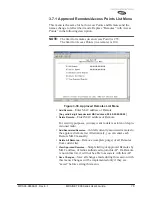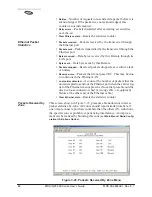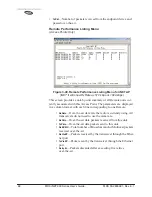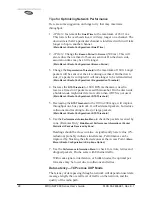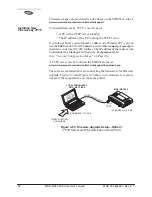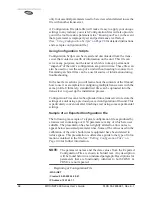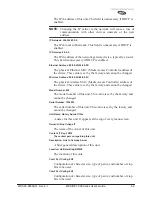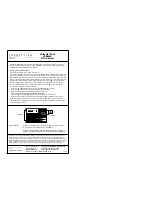
88
MDS iNET 900 Series User’s Guide
MDS 05-2806A01, Rev. E.1
• The radio goes through a listening and learning period at
start-up before it will send any packets over either of its ports.
This is about 10 seconds after the CPU’s operating system has
finished its boot cycle.
• The bridge code in the transceiver operates and makes decisions
about packet forwarding just like any other bridge. The bridge
code builds a list of source MAC addresses that it has seen on
each of its ports.
There are a few general rules that are followed when a packet is
received on any port:
• If the destination address is a multicast or broadcast address,
forward the packet to all remotes.
• If the destination address is not known, forward the packet to
all remotes.
• If the destination address is known, forward the packet to the
port that the destination is known to be on (usually the RF
port).
• The bridge code uses Spanning Tree Protocol (STP) to pre-
vent loops from being created when connecting bridges in
parallel. For example, connecting two remotes to the same
wired LAN could create a loop if STP was not used. Every
bridge running STP sends out Bridge Protocol Data Units
(BPDUs) at regular intervals so that the spanning tree can be
built and maintained. BPDUs are 60-byte multicast Ethernet
frames.
2. The wireless MAC has two settings that can be adjusted.
•
Fragmentation threshold
is the threshold in bytes, which causes
the MAC to fragment a packet.
•
RTS threshold
is the threshold in bytes that causes the MAC to
use RTS/CTS before sending the packet.
3. Because of timers and other components of the protocol, there is a
maximum distance limit of 40 miles for reliable operation. Repeater
stations may be used to extend this range.
4. Throughput calculations must take into account all overhead.
The following is an example of the overhead at each layer for a
100-bytes of data over UDP:
• Data: 100 bytes
• UDP header: 8 bytes
• IP header: 20 bytes
• Ethernet header: 14 bytes
• 802.11 header 24 bytes
• LLC and SNAP header: 8 bytes
• FHSS (iNET) header and FCS: 16 bytes
Summary of Contents for iNET 900 Series
Page 10: ...2 MDS iNET 900 Series User s Guide MDS 05 2806A01 Rev E 1 ...
Page 26: ...18 MDS iNET 900 Series User s Guide MDS 05 2806A01 Rev E 1 ...
Page 118: ...110 MDS iNET 900 Series User s Guide MDS 05 2806A01 Rev E 1 ...
Page 120: ...112 MDS iNET 900 Series User s Guide MDS 05 2806A01 Rev E 1 ...
Page 136: ...128 MDS iNET 900 Series User s Guide MDS 05 2806A01 Rev E 1 ...
Page 148: ...140 MDS iNET 900 Series User s Guide MDS 05 2806A01 Rev E 1 ...
Page 150: ...142 MDS iNET 900 Series User s Guide MDS 05 2806A01 Rev E 1 ...
Page 164: ...156 MDS iNET 900 Series User s Guide MDS 05 2806A01 Rev E 1 ...
Page 172: ...164 MDS iNET 900 Series User s Guide MDS 05 2806A01 Rev E 1 ...


